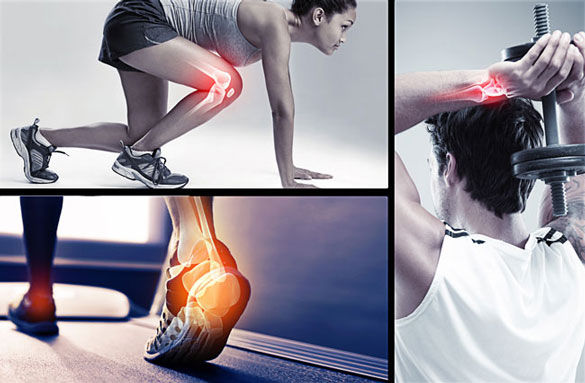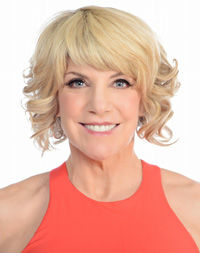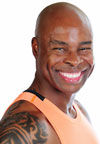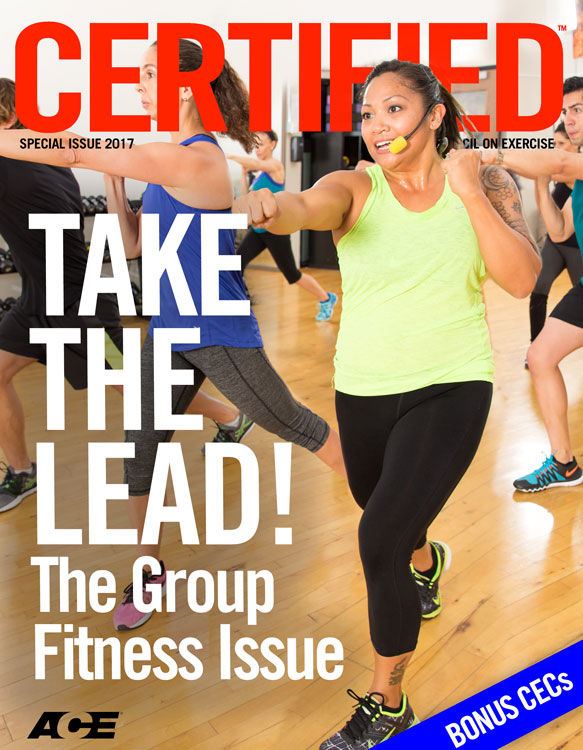
As a health and fitness professional, you probably do all you can to help your clients escape the pain and setbacks associated with chronic overuse injury. You tell them not to aggravate aching joints. You plan their programs to include adequate recovery. And when injury occurs, you encourage them to seek treatment sooner rather than later.
But how closely do you heed your own advice? More than a few personal trainers and group fitness instructors have found themselves heading down an unsustainable road to overuse injury. This is an unfortunate situation for anyone, but especially so for those in the fitness profession. Your body is arguably your most valuable tool, so you’ll want to do all you can to prevent being sidelined by overuse and overtraining.
With that in mind, it’s essential to take steps now to veer off the road to injury or sidestep that ill-fated path altogether. In this article, you’ll receive advice from a top corrective exercise specialist about managing, and hopefully avoiding or mitigating, the effects of chronic injury. You’ll also hear from several health and fitness pros who’ve bounced back from injury feeling stronger—and, importantly, wiser. Learn from their stories so you can protect yourself against an injury that might hamper your happiness and career.
Early Warning Signs
Overuse injury can creep up on you, but there are telltale red flags before the pain becomes unbearable. The longer you put off doing anything about it, the more insurmountable your injury could become.
“The early signs of pain should never go unheeded,” says Wendy Drabble Cole, ACE Certified Personal Trainer and Medical Exercise Specialist and owner of Balanced Training Bootcamp in Palm Desert, Calif. She explains her experience with chronic injury in the sidebar below.
Taking action is important, but how do you know if what you’re feeling is likely to pass or here for the long haul?
“Chronic pain has been defined as pain consistent for greater than three months or intermittent for six months or more,” says Anthony B. Carey, M.A., corrective exercise specialist, author of The Pain-Free Program (John Wiley & Sons, Inc., 2005) and founder of Function First in San Diego. “Ignoring, working through and/or medicating to work through the pain runs the risk of increasing sensitivity within the nervous system and transforms something that started as irritating to something chronic.”
When pain becomes apparent, your first reaction might be to tough it out for any number of reasons, including being too busy to have it looked at or because you’re unconvinced that it’s a big deal.
“Don’t assume because you are a fitness professional that you can diagnosis your own body when things become chronic,” says Carey. “Go see a licensed medical professional to get insight into what structures might be involved and to rule out any other major health risks.”
Many people focus solely on the site of an injury when looking for a cause and resolution. However, pulling back for a larger perspective can help you feel empowered in the healing process. “We tend to address the ‘squeaky wheel’ and put out fires versus seeing the big picture,” says Carey.
For example, Cole recommends looking at how daily life might play into the pain. Are you feeling the weight of too many responsibilities combined with too little time to accomplish it all? Do you carve out enough downtime for yourself? Cole describes chronic pain as a “weak link” that can flare up from life’s stressors.
“Pay attention to your stress levels, your rest, your nutrition, the demands on your time and your body,” she says. “I know when one of these ‘buckets’ gets out of sync, my ‘weak links/old injuries’ start to complain. Many of my injuries coincided with high stress periods of time in my life.”
As fitness instructor Melissa Layne, M.Ed., found out when she ignored a worsening hip injury for almost two years, there’s often more at stake than just your physical well-being.
“Although going to the doctor earlier wouldn't have changed my diagnosis or outcome,” she says, “I waited so long that my personal relationships suffered. I was in such chronic pain and losing so much sleep that I was a bear to be around. I didn’t want to do anything, and many friends started avoiding me.” Layne is a faculty member in the Health and Physical Education Department of the University of North Georgia and author of Water Exercise (Human Kinetics, 2015).
In the fitness industry, we’re fond of the adage, “Listen to your body”—and rightly so.
“Pain is information,” says Carey. “It is a message from the free nerve endings (information gatherers) in that area that something is not right. If that message is consistent, it is deserving of an evaluation.”
In other words, don’t let the pain fester.
“I've learned that when an injury comes on, I must take proactive measures instead of reactive measures,” says Skip Jennings, a Los Angeles–based transformational coach and group fitness manager at Equinox South Bay. Addressing pain head-on might include physiotherapy, prolonged rest, surgery and/or other less invasive solutions. Concurrent to rehabilitation, however, is figuring out what to do about the physical aspects of your job.
 Earning Without Sweating
Earning Without Sweating
Teaching or training when you’re in pain is never ideal. To help safeguard against relying too heavily on your physical performance for cash flow, it’s a good idea to diversify your job offerings. Also, check into insurance policies that would help you pay the bills should an injury arise. Here are a few ideas that are well suited to health and fitness pros:
- Writing (articles, a book, blog posts)
- Lecturing/teaching/educating (in person, on a webinar, via live video on social media or podcasts)
- Managing (a gym or studio)
- Programming (creating new workouts/programs for a gym, company or boot camp)
- Mentoring/consulting (on your top areas of expertise)
- Online personal training (via the web or mobile)
Coping on the Job
Does a diagnosis and ensuing treatment inevitably mean time off work? It’s a legitimate concern for those who love teaching/training and rely on the income it provides. Carey says he’s met and worked with many fellow fitness professionals over the years who deal with chronic pain/injury and worry that it will affect job performance. “Chronic pain is a very complex experience and in many cases can be compounded by the stress on a fitness professional who may not be able to perform their job at all or be limited in their ability to perform,” Carey says.
Ironically, fitness experts often ignore the pain even if they instinctively know it’s not in their best interest. Perhaps it’s because they don’t like appearing “weak” in front of clients, muses Cole. “After all, we are the experts, right? Injuries change that balance,” she says.
On the flip side, these occasions can serve as a learning moment for clients/participants working through injuries of their own. Showing them you honor your body enough not to push through the pain week after week can have a positive impact on clients’ self-care.
Still, it might be unrealistic or undesirable to take time off work for an extended period. Then what? Demo less and talk more, say the fitness pros who’ve been there. Keli Roberts is a master trainer for BOSU, Schwinn and IndoRow and an ACE Certified Personal Trainer and Group Fitness Instructor. She struggled with a shoulder injury that eventually led to a total shoulder replacement.
“One of the things I got really good at was teaching while doing very little of [the workout],” she says. “Being an effective coach doesn’t mean having to do it yourself. I now also teach a couple of different formats that I don’t actually have to do much or any physical demonstration. I can use my teaching skills without having to work physically.”
Jennings echoes Roberts’ approach. “When I struggle with injuries, I do not demonstrate when I teach,” he says. “I simply go into ‘coach’s mode.’ I mostly focus on verbal communication instead of visual.”
Layne follows that same technique. “I have always been more of an auditory instructor for my step classes, so they were used to me talking them through the choreography,” she says. “When new people arrived in class, I introduced the front row as the ‘stand-in’ instructors. By the end of the two years [I was injured], I was pointing to members who had good form in strength class.”
“It’s really harsh if your only source of income is from teaching and presenting,” says Roberts. “Fortunately, I have diverse skills that have allowed me to keep my head above water.”
To ease the worry of missed paychecks due to prolonged injury, diversify your offerings as much as possible. This is what Roberts calls “earning without sweating.” See the sidebar, "Earning Without Sweating, for ideas on diversifying. In the name of diversification, also allow your services and skill sets to evolve, especially as you age.
“Overuse injury comes from teaching the same formats over and over again,” says Jennings. “Choose new formats or different ways of teaching, like we would teach to our students.” And integrate self-care and prevention into your teachings and personal workout regime.
“Corrective exercises, movement preparation, mobility work and soft-tissue work are all tools of the trade that should be part of our personal programs,” says Carey.
Above all, don’t fall for the notion that beating up your body is the cost of doing business or a rite of passage in the fitness profession.
“Dealing with pain is a choice and not a requirement,” says Carey. Is your current training schedule and recovery practice realistically sustainable for the next five years? “If you are struggling with setbacks due to non-traumatic injuries, the answer is clearly ‘no,’” urges Carey. “That may require some serious introspection and appreciation for the fact that your body needs to serve you for a long time, including long after you’ve hung up your clipboard.”
Words From the Wise
“Your body is your bread-and-butter,” says Jennings. Why put your physical, mental and professional well-being in jeopardy by neglecting to address an injury or diminish your susceptibility to overuse?
“Most fitness pros would agree that your ability to move well enhances your ability to do your job,” says Carey. “So just as the Uber driver relies on her vehicle or the baker relies on his oven, the fitness pro needs to dedicate time to taking care of his or her own body.”
“As fitness professionals, we have to walk the walk and talk the talk,” adds Layne. “If our clients see us not physically taking care of an injury, then we are not setting a good example for them. It is perfectly fine to tell clients that you are feeling pain and will be taking it easy with a joint or a muscle group.”
Bottom line: Protect yourself! It starts with expanding your professional offerings and reducing the risk of wearing out your joints. The self-care you perform today will serve you well, professionally and personally, for decades to come.
Four Health and Fitness Pros Share Their Stories of Injury
Read these stories from four health and fitness pros who found themselves on the road to injury. If their trajectories sound familiar, contemplate how you can learn from their experiences.
Melissa Layne

Instructor, presenter, faculty member in the Health and Physical Education Department of the University of North Georgia
“My injury began as a nagging collapse of my hip joint—during step class, while climbing stairs or when standing still, my hip just collapsed like a rag doll. I ignored it for almost two years, thinking it was step-class overload from teaching step three times a week. The pain got so bad that it kept me up at night. That’s when I finally saw the doctor, got an X-ray and was scheduled for a total hip replacement. With the advances made in medicine, both surgical and physical therapy, I found that recovery was quick and the end result was better than I was expecting. Waiting or avoiding a doctor was the worst mistake I made.”
Keli Roberts

Los Angeles–based master trainer for BOSU, Schwinn and IndoRow, personal trainer, instructor, presenter
“My original injury to my shoulder was when I first started teaching, back in the ‘80s. I got hit by a car while riding my bike and tore my rotator cuff. I didn’t take time off teaching and didn’t go for physical therapy (PT). Fast forward to the early 2000s, when I fell on that same shoulder two more times, once while road biking and once while mountain biking. By then, I had a significant amount of pain and dysfunction, but I have a high tolerance for pain. I just thought I’d get it looked at when the pain got too bad. In 2005, I was in a shoulder workshop/clinic with a physical therapist and he used me as an example of a shoulder injury. After the clinic, he asked me what I was going to do about my shoulder. I said, “Wait until it got really bad.” He said, “It is really bad.” That motivated me to see a surgeon, and I had two surgeries between 2005 and 2011. However, by 2014, I was in constant, severe pain. I could barely move, I couldn’t sleep, I could hardly teach. As a result, I had a total shoulder replacement, and it’s been completely successful! I spent six months not teaching and doing PT in the water, which was fantastic. Now I have a good team of doctors, acupuncturists, PTs and massage therapists that I work with. When I have a pain that persists longer than a few weeks, I get it looked at.”
Skip Jennings

Instructor, presenter, group fitness manager at Equinox South Bay, Calif.
“My injury came from a fall, but it was an overuse injury. I fell on my right shoulder, which aggravated a pinched nerve in my neck. My physical therapist and spinal surgeon said it was because of the work that I do. Yoga, lifting, running, cycling—all the classes I teach were the initial cause of this injury. I could not move my left arm and shoulder for about four months. The major steps that I took to overcome it were physical therapy and rest.”
Wendy Drabble Cole 
Personal trainer, medical exercise specialist, owner of Balanced Training Bootcamp in Palm Desert, Calif.
“I had an overuse injury of the shoulder, or so it seemed at the time. At first it seemed pretty benign, but it gradually got worse and worse. At the beginning, I did some minor ‘extra stretching’ of the typical culprit muscles of the shoulder. I gradually added in more rolling and self-myofascial release techniques, but to no avail. Eventually, realizing that I needed an intervention beyond what I was doing, I sought out a corrective exercise strategy. There were obviously bigger things at play that needed addressing. In corrective exercise, we seek the cause, not the symptom. I did breathing exercises on a roller and manual therapy. I also incorporated a dietary intervention to ensure proper nutrients in the blood. It seems in the end that my shoulder injury was really the result of old scar tissue that affected the functional front line.”





 by
by 

 Earning Without Sweating
Earning Without Sweating




